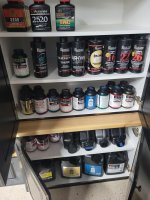The compactness of the AR-15 has been a great limiting stick though to force the industry to develop higher performance cartridges that still fit within a magazine that is easy to carry on soldier’s load. Once you depart from that basic form factor for the magazine, the pouches and soldier’s load suffers. A lot of people might see this and only have reference to a mag pouch or two on their range belt, never having had to hump a basic load or basic load plus, in addition to all the rest of their duty position-specific equipment (Radios, Medic Bags, breaching tools, demo, Anti-Tank weapons, linked 7.62 on gun teams, tripods, T&E mechanism, 40mm Grenades, smoke grenades, grenades, Night Vision, etc.). This is why the 6.8x51 is an abortion even if they had a great weapon design, which they don’t.If you are starting with a blank'ish slate for the rifle and magazine there is no reason to compromise with the Grendel case. Grendel's case diameter is great, it's case capacity isn't. Add four or five grains capacity to a bolt that will allow 62kPSI of pressure. I like Grendel but when you take it out of the AR15 it makes zero sense.
This is why I have been more of an advocate for Grendel replacing 7.62 NATO. Similar concept as replacing 50 BMG with 338 Norma Mag.
5.56 is a very inefficient case that wastes a lot of powder, so it’s too long for what it delivers. We could replace 5.56 with something smaller in overall length, and deliver better performance with a look at bore diameter, case design, and propellant. KAC/Hornady already showed that with the 6x35 PDW. (.221 Fireball necked up). You can carry a bunch of those 6x35 KAC PDW mags, almost like M2 Carbine mags.
The .264 LICC is a good compromise getting us away from the 7.62 NATO form factor battle rifle cartridge though. It would be far superior in DM Carbines and LMGs, and would make a nice changeover with NATO coordination for a new set of weapons based on it in those roles. I think 5.56 will be around until the 2nd Coming though.



